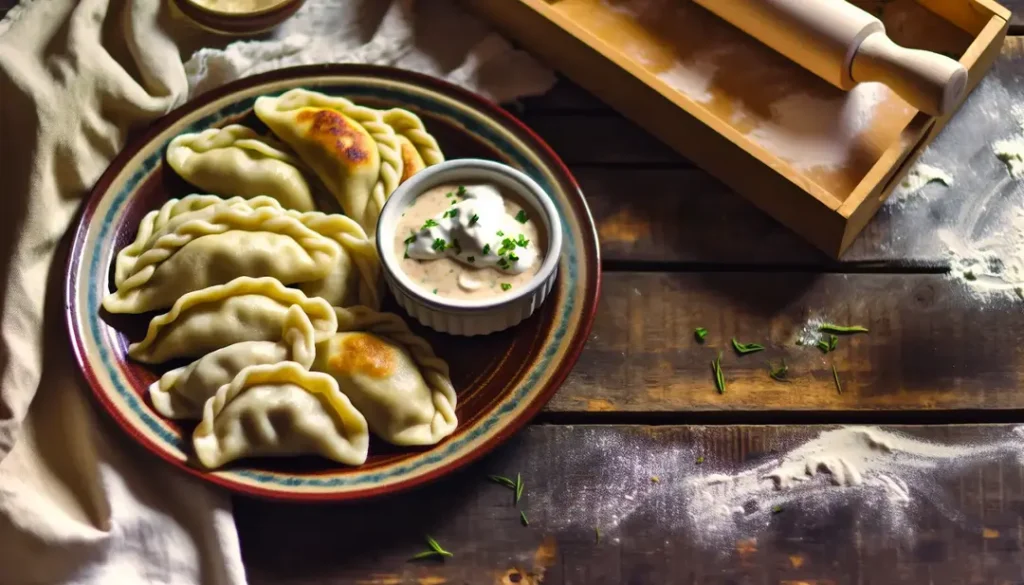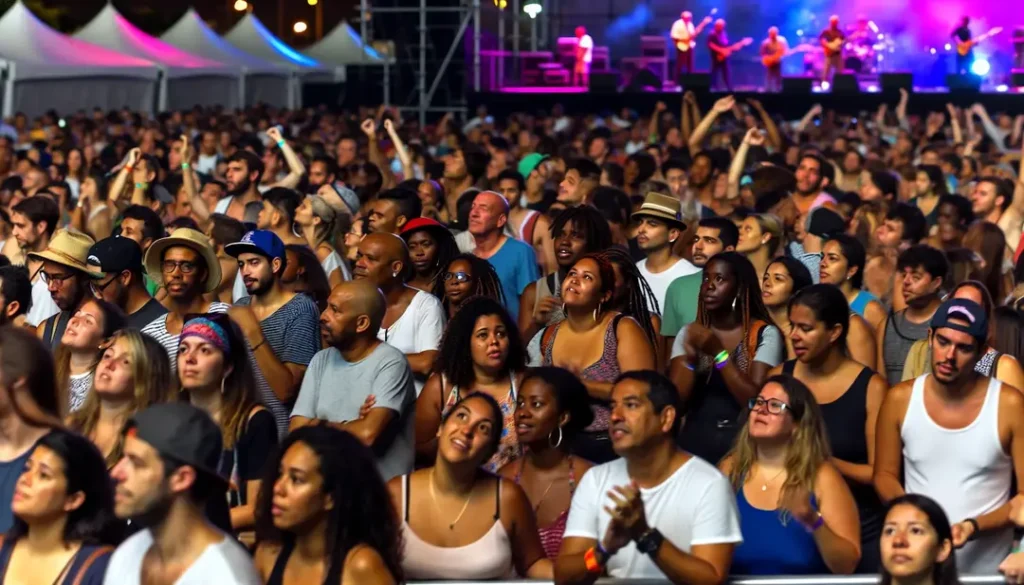Pittsburgh, PA, is a city where culture thrives through its history, arts, and community. But what elements stitch together the cultural fabric of this spirited city?
This article peels back the layers of “culture Pittsburgh PA” – exploring its museums, music scene, culinary sphere, festivals, and more to reveal how they shape Steel City’s unique cultural identity.
Key Takeaways
- Pittsburgh’s cultural identity is intricately shaped by its historical industrial roles, its diverse ethnic heritage, and its legacy of artistic philanthropy, resulting in a vibrant arts and culture scene.
- The city’s art scene is thriving, with numerous galleries, museums, theaters, and venues showcasing local and international talent. At the same time, jazz and other contemporary music genres contribute significantly to its cultural fabric.
- A blend of innovation and technology is progressively influencing Pittsburgh’s culture, as seen in its tech scene, innovative arts initiatives, and technologically enriched artistic experiences.
Pittsburgh’s Cultural Tapestry

Like a meticulously woven tapestry, Pittsburgh’s cultural identity is the result of diverse threads interlacing over time. This vibrant city’s cultural scene has been shaped by its historical role as a center for coal mining and steel production, as well as its enduring legacy of cultural philanthropy and diverse ethnic heritage.
Downtown Pittsburgh, with its bustling arts scene and charismatic neighborhoods, encapsulates this rich cultural tapestry.
History and Evolution of Pittsburgh’s Cultural Scene
Emerging from the soot and smoke of its industrial past, Pittsburgh’s cultural scene profoundly reflects the city’s history, with coal mining and steel production playing pivotal roles. Historic industrial sites have been preserved and repurposed as cultural venues, reflecting the profound influence of the industry on the city’s identity and culture.
Enriched by its varied ethnic traditions and communities, Pittsburgh’s history as a center for cultural philanthropy has contributed to the development of a lively and diverse arts and culture sector. This progression has been influenced by the lasting impacts of individuals like Andrew Carnegie, who established the Carnegie Library, and the Heinz family, who have consistently contributed to the advancement of the city’s arts community. The Pittsburgh Cultural Trust has also played a significant role in this development.
Currently, the arts and literature scene in Pittsburgh is on a flourishing and expanding trajectory, reinforcing their crucial role in maintaining the city’s liveliness and energy.
Ethnic diversity and its influence on local culture
Pittsburgh’s cultural identity is significantly shaped by its ethnic diversity, which is visible in its diverse traditions and dynamic neighborhoods. The African American population, constituting nearly 23% of the city’s inhabitants, has contributed to the establishment of pivotal cultural landmarks such as the August Wilson African American Cultural Center and historically significant neighborhoods like the Hill District.
The influence of Italian cultural traditions in Pittsburgh is demonstrated through the vibrant festivals and parades that honor Italian heritage year-round, highlighting the community’s lasting impact and contribution to the city’s diverse cultural landscape.
The Irish community holds cultural significance in Pittsburgh through its various events and organizations dedicated to celebrating Irish history and traditions.
Immigrant communities and their impact on Pittsburgh’s cultural tapestry
Immigrant communities have substantially shaped the cultural landscape of Pittsburgh, a significant presence dutifully recorded by the History Center. The city boasts a rich tapestry of cultures, with lively neighborhoods that celebrate diverse traditions, languages, and customs.
The immigrant communities in Pittsburgh have made substantial contributions to the city’s arts, cuisine, and traditions. The traditional Pittsburgh foods reflect the multicultural heritage brought by European immigrants in the early 20th century, and more recent immigrants from Vietnam, India, Mexico, and Zambia have also added their unique flavors to the city’s diverse culture.
Artistic Hub: Galleries, Museums, and Theaters
Transcending the steel and smoke of its industrial past, Pittsburgh has metamorphosed into a thriving artistic hub. The city’s landscape is dotted with a plethora of galleries, museums, and theaters showcasing the creative talents of local and international artists, including the renowned Carnegie Museum.
By presenting contemporary art, exploring modern issues, addressing societal challenges, and broadening perspectives, the city’s galleries and museums bolster Pittsburgh’s status as an artistic hub.
Visual arts: galleries and museums
The city’s vibrant visual arts scene boasts renowned institutions such as The Andy Warhol Museum and the Mattress Factory, which have made a significant contribution to Pittsburgh’s visual arts landscape. The Andy Warhol Museum stands as the largest museum in the United States devoted to a solitary artist, delving into the narrative of Andy Warhol and scrutinizing his enduring impact.
The Mattress Factory leads the way in the development of alternative art forms, significantly influencing Pittsburgh’s art scene. Visitors to the galleries and museums in Pittsburgh can anticipate encountering a diverse array of visual art exhibitions encompassing works by regional artists, special exhibits showcasing various art styles and periods, and contemporary art.
Performing arts: theaters and venues
Pittsburgh’s performing arts resonate powerfully within its theaters and venues. The prominent theaters in Pittsburgh, such as the Benedum Center and Heinz Hall, offer opportunities for diverse artistic expressions and events, enhancing the cultural landscape.
The August Wilson African American Cultural Center and the Pittsburgh Public Theater stand as significant symbols of the city’s performing arts scene.
Prominent artists and their contributions to Pittsburgh’s art scene
The creative energy of its artists fuels Pittsburgh’s art scene. Prominent figures such as Andy Warhol have left an indelible mark on the city, shaping its pop art scene.
August Wilson, known for his Pittsburgh Cycle of 10 plays, made significant contributions that depicted and honored the African American experience in the city, shaping the overall narrative of Pittsburgh’s art scene.
Music Heritage and Live Music Scene
The richness and diversity of Pittsburgh’s music heritage mirrors the city itself. The city’s jazz legacy, which includes notable musicians like Billy Strayhorn and Mary Lou Williams, has left a profound imprint on the city’s cultural identity.
The city’s contemporary music scene is no less vibrant, with artists such as Christina Aguilera, Wiz Khalifa, and Mac Miller making their mark.
Jazz legacy and notable musicians
Pittsburgh’s jazz legacy resonates in its music venues and the hearts of its residents. The city has produced notable jazz musicians such as:
- Paul Chambers
- Eddie Safranaski
- Ray Brown
- Lillian Carter
Maintaining a rich jazz heritage that continues to thrive today.
Billy Strayhorn and Mary Lou Williams played significant roles in shaping the city’s jazz scene, reminiscent of the harmony found in its picturesque rolling hills.
Contemporary music genres and artists
Beyond jazz, Pittsburgh’s contemporary music scene is vibrant and diverse. Popular genres include hip-hop, R&B, and neo-soul music, and artists such as Wiz Khalifa and Mac Miller have left a significant impact on the city’s music culture.
Best venues for live music experiences
Pittsburgh’s live music scene is as diverse as its music genres. Top-rated live music venues in the city include:
- Smalls
- Stage AE
- Club Cafe
- The Smiling Moose
- Mr. Smalls Theatre
Each venue, including botanical gardens and university concert halls, offers unique experiences and showcases a rich array of jazz and classically trained artists alongside numerous music organizations and ensembles.
Culinary Delights: Food and Drink in Pittsburgh

The culinary scene in Pittsburgh delightfully intermingles local specialties with influences from ethnic cuisines. Some of the local specialties include:
- Primanti Brothers sandwiches
- Pittsburgh Salad
- Pierogies
- Prantl’s Burnt Almond Torte
These dishes are integral to Pittsburgh’s culinary heritage.
The food scene in Pittsburgh is also enhanced by a variety of flavors from different cultures, including influences from:
- Vietnam
- Mexico
- Zambia
- Levantine countries such as Israel, Palestine, Syria, Jordan, and Lebanon.
Local specialties and iconic dishes
Pittsburgh’s culinary scene is known for its iconic dishes and local specialties. The Primanti Brothers’ sandwiches have a significant historical background, originating in the early twentieth century to cater to dockworkers. These dishes have since become integral to Pittsburgh’s culinary heritage.
Ethnic cuisine influences
The influence of ethnic cuisines on Pittsburgh’s food scene cannot be overstated. The city’s food scene has integrated food traditions from diverse cultures into the local food scene, and establishments like Conflict Kitchen use ethnic cuisine as a means to preserve and communicate cultural identities.
Top dining spots and recommendations
Pittsburgh has a plethora of dining spots that offer a taste of the city’s culinary delights. First-time visitors should consider dining at establishments such as:
- Apteka for its Eastern European dishes
- Pusadee’s Garden is known for its Thai cuisine
- Meat & Potatoes for hearty American fare
- Morcilla for an upscale Spanish experience.
Celebrating Culture: Festivals and Seasonal Events

Experiencing the myriad festivals and seasonal events offers the best insight into Pittsburgh’s vibrant cultural scene. The city hosts major arts and cultural festivals, including:
- Gallery Crawl in the Cultural District
- Highmark First Night Pittsburgh
- EQT Children’s Theater Festival
- Dollar Bank Three Rivers Arts Festival
Arts and cultural festivals
Pittsburgh celebrates the arts with grandeur and style. The Three Rivers Arts Festival, established in 1960, has become a significant aspect of Pittsburgh’s cultural heritage.
The Pittsburgh International Jazz Festival is another highlight, celebrating the city’s rich jazz legacy.
Seasonal events and celebrations
A variety of seasonal events hosted by Pittsburgh reflect both its traditions and modernity. The traditional Light Up Night event, a family festival that commenced in 1960, is a cherished tradition that initiates the holiday shopping season.
The St. Patrick’s Day Parade, a tradition since 1950, is a representation of the community’s strong sense of pride in its Irish culture and heritage.
Tips for experiencing Pittsburgh’s events like a local
Exploring off-the-beaten-path venues and attending neighborhood gatherings provide a local experience of Pittsburgh’s events. Some unique places to visit include:
- Unique museums
- Atom smashers
- Oddities shops
- Unusual art galleries
- The Allegheny Cemetery walking paths
All of these locations are worth exploring for a unique and memorable experience in Pittsburgh.
Participating in neighborhood gatherings offers the opportunity to immerse oneself in the unique natural history and cultural heritage of each neighborhood.
Sports and Community Spirit
In Pittsburgh’s culture, sports play a unifying role, fostering a strong sense of community pride. The prevalent sports in Pittsburgh, which contribute to its cultural significance, are football with the Pittsburgh Steelers, hockey with the Pittsburgh Penguins, and baseball with the Pittsburgh Pirates.
Popular sports teams and their cultural impact
The city’s famous sports teams significantly impact Pittsburgh’s culture. The sports teams in Pittsburgh have greatly influenced the city’s culture, community, architecture, and fashion.
The extensive sporting legacy has played a pivotal role in shaping the city’s identity and fostering the pride of its inhabitants.
Key sporting events and traditions
Several vital sporting events and traditions reflecting the city’s community spirit find their home in Pittsburgh. The Light Up Night event, a family festival that commenced in 1960, is a cherished tradition that initiates the holiday shopping season.
The St. Patrick’s Day Parade in the Strip District, a tradition since 1950, is a representation of the community’s strong sense of pride in its Irish culture and heritage.
Sports-related attractions for visitors
A range of sports-related attractions are on offer for visitors in Pittsburgh. Heinz Field inaugurated in 2001, is celebrated for its role in replacing the Three Rivers Stadium and its extensive sports heritage.
PNC Park has been the setting for numerous noteworthy occurrences, further enhancing the city’s historical appeal to visitors.
Innovation and Technology: Shaping Pittsburgh’s Modern Culture
Innovation and technology also play a role in shaping Pittsburgh’s vibrant culture. The tech industry has significantly influenced Pittsburgh’s culture by promoting innovation and entrepreneurship, particularly through institutions such as CMU.
The tech scene and its influence on local culture
Influencing local culture and fostering creativity, Pittsburgh’s tech scene includes companies like Google and Uber. The presence of Google in Pittsburgh has played a significant role in attracting creative talent and shaping local commerce and culture.
Innovative arts and cultural initiatives
Pittsburgh’s cultural landscape also benefits from innovative arts and cultural initiatives. The city of Asylum Pittsburgh offers sanctuary to endangered writers and promotes cross-cultural exchange, enhancing the city’s cultural diversity and artistic vibrancy.
How technology is redefining Pittsburgh’s cultural landscape
With cutting-edge art installations, immersive experiences, and new ways of engaging with the city’s heritage, technology is redefining Pittsburgh’s cultural landscape. Two noteworthy instances of technologically advanced interactive exhibits in Pittsburgh are Modern Made Leisure at Fallingwater by Charles Lutz and Congregation, an interactive art installation in Market Square.
Historical Perspectives: Unearthing Pittsburgh’s Past
Pittsburgh’s Industrial Beginnings
Pittsburgh, fondly known as the “Steel City,” has roots deeply embedded in the industrial era. The city’s journey began in earnest with the burgeoning of the steel and coal industries in the 19th century. This period marked the transformation of Pittsburgh from a modest frontier town to an industrial powerhouse. The rivers of Pittsburgh, teeming with barges and steamboats, became the lifeblood of this industry, transporting coal and steel to build a growing nation. The city’s industrial might not only laid the groundwork for its economic prosperity but also set the stage for its diverse cultural development.
The Gilded Age and Its Legacy in Pittsburgh
The Gilded Age, a term coined by Mark Twain, was a period of immense economic growth and ostentatious wealth, and Pittsburgh stood at its epicenter. This era saw the rise of industrial magnates such as Andrew Carnegie and Henry Clay Frick, whose fortunes were intricately tied to the city’s steel mills. Their legacy, however, extends beyond industry, as they became prominent philanthropists, profoundly influencing Pittsburgh’s cultural landscape. The Carnegie Library and the Frick Building are testaments to their enduring impact, serving as cultural beacons that continue to educate and inspire.
Transformation: From Steel to Technology
As the 20th century progressed, Pittsburgh witnessed a significant shift. The once booming steel mills gradually gave way to the rise of technology and innovation. This transition was marked by a remarkable metamorphosis of the city’s landscape. Old factories and industrial sites were repurposed into hubs of technology and culture, symbolizing a city reinventing itself. Today, Pittsburgh is home to thriving tech companies and startups, drawing a stark yet harmonious contrast to its industrial past, showing the history of Pittsburgh has helped it grow to the city it is.
Pittsburgh in Modern Times: Bridging Past and Present
Pittsburgh’s journey from its industrial roots to a modern cultural hub is a compelling narrative of resilience and reinvention. The city’s historical backdrop enriches its present-day cultural tapestry, offering a unique blend of the traditional and the contemporary. From the echoes of its steel-clad past to the vibrant beats of its modern tech-driven culture, Pittsburgh stands as a testament to the enduring spirit of transformation and growth. Understanding this rich history not only deepens one’s appreciation of Pittsburgh’s cultural scene but also highlights the city’s ability to adapt and flourish through changing times.
Summary
In conclusion, Pittsburgh’s vibrant culture is a rich tapestry woven from diverse threads of history, ethnic diversity, arts, music, cuisine, sports, and technology. From its industrial roots to its modern innovation, Pittsburgh offers a unique blend of the traditional and the contemporary, the historic and the innovative. Whether you’re a local or a visitor, there’s always something new to discover in this dynamic city.
Frequently Asked Questions
What is the culture of Pittsburgh?
Pittsburgh’s culture is characterized by its eclectic mix of cultures, communities, and neighborhoods, which contribute to a vibrant arts and cultural scene with museums, galleries, exhibits, and world-class performances. Explore and be inspired by the city’s rich cultural offerings.
What is Pittsburgh best known for?
Pittsburgh is best known for its historical role as an industrial hub, particularly in coal mining and steel production. It is often referred to as the “Steel City” and “City of Bridges.”
What is considered the cultural district of Pittsburgh?
The cultural district of Pittsburgh is located between the Convention Center and Stanwix Street in Downtown Pittsburgh. It includes over 90 retail shops, 50 dining establishments, seven theaters, eight public parks, art installations, and art galleries.
What are some of the prevalent sports in Pittsburgh?
The prevalent sports in Pittsburgh are football with the Pittsburgh Steelers, hockey with the Pittsburgh Penguins, and baseball with the Pittsburgh Pirates, contributing to the city’s cultural significance.
In what ways have companies such as Google and Uber exerted influence on Pittsburgh’s local economy and culture?
Google’s presence in Pittsburgh has attracted creative talent and shaped local commerce and culture. At the same time, Uber’s self-driving car research center has altered the transportation landscape and drawn attention and investment to the local tech scene. This has had a significant influence on Pittsburgh’s local economy and culture.
